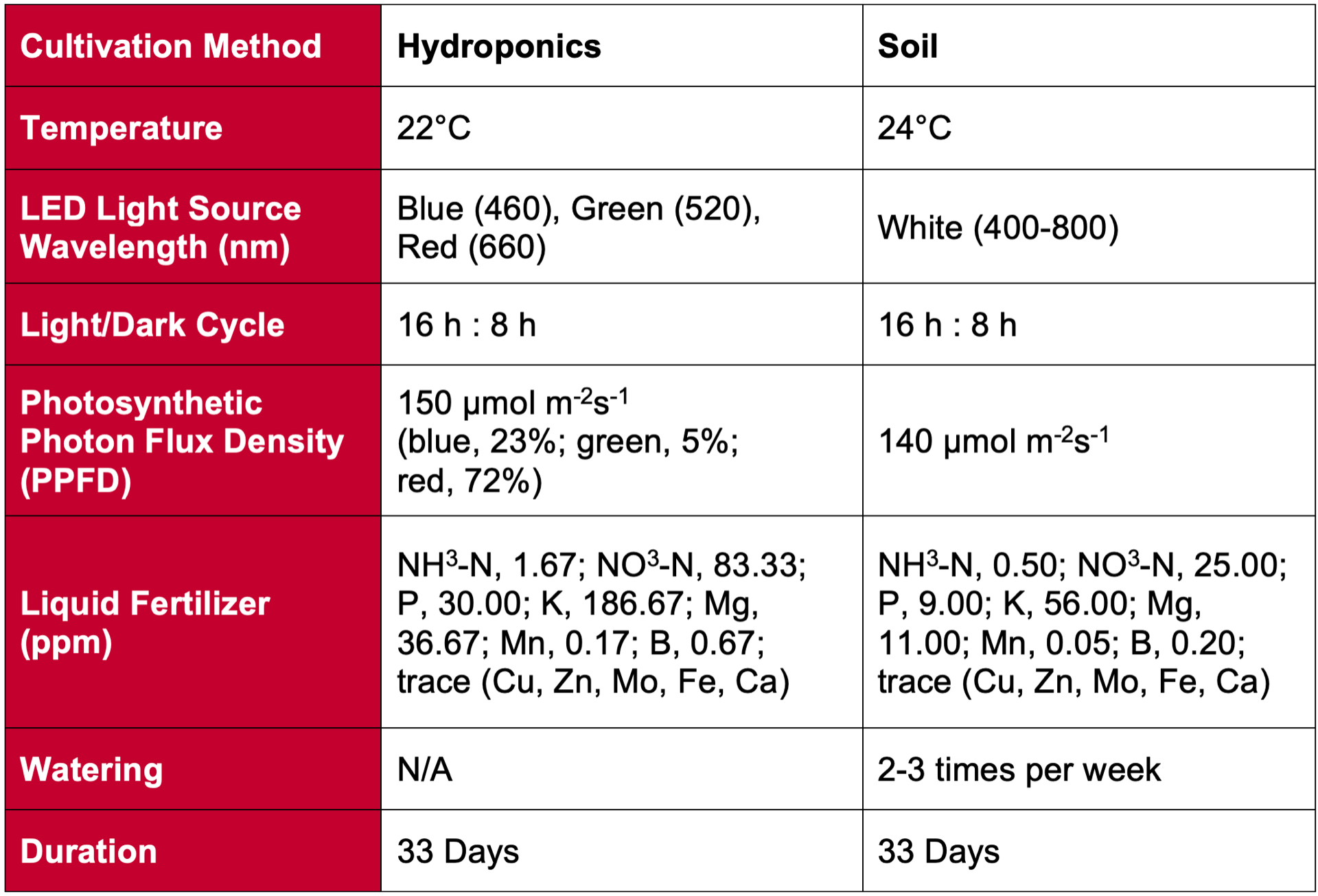Original Paper
Tamura Y, Mori T, Nakabayashi R, Kobayashi M, Saito K, Okazaki S, Wang N and Kusano M (2018) Metabolomic Evaluation of the Quality of Leaf Lettuce Grown in Practical Plant Factory to Capture Metabolite Signature. Front. Plant Sci.9:665.
doi: 10.3389/fpls.2018.00665
Context
Cultivation of certain crops is moving out of the field. Indoor production has taken the form of greenhouses, tunnels, and plant factories. These growing methods been collectively deemed controlled environment agriculture (CEA). The attraction is in the name – control. Moving crops out of the field helps remove risk of unpredictable weather and can allow for optimized conditions for crop production. It even enables year-round growing that provides a steady source of fresh food to the public and income to the growers instead of the seasonal flux of traditional agriculture.
With food moving indoors under controlled conditions, crops are receiving different types of input in terms of nutrients, lighting, day/night cycling, temperatures, disease and pest stresses, and other variables. Some crops are growing differently and looking different as well. It all depends on the control conditions.
As plant growth and development changes due to these controlled environments, the metabolic processes dictating that growth and development are probably varying as well. As a result, there may be changes in the plant’s profile of chemical compounds, or metabolites, which take part in and are produced by plant metabolism. These compounds are integral to the structure and general function of the plant as well as its defense against pests and disease. Again, with cultivation conditions changing, the metabolite compositions of the plants are likely changing simultaneously.
The Experiment
If we want to know if or how CEA is changing the metabolite profiles of our food compared to field cultivation, we need to isolate each element of the “control” to determine what changes are being caused by which conditions. To this end, a group from RIKEN in Japan that studies metabolite profiles (an analytical chemistry practice called metabolomics) chose to compare compounds of lettuce grown in a hydroponic system (plant roots growing directly into water with an added nutrient solution) within a Keystone Technology Inc. (Japan) plant factory to lettuce grown in a similarly-controlled growth chamber except planted traditionally in soil (Table 1).
Table 1. Plant factory conditions for hydroponic cultivation treatment compared to growth chamber conditions for the soil treatment.
This group chose two lettuce cultivars, ‘Black Rose’ and ‘Red Fire’, with one head of each cultivar grown per treatment – hydroponics and soil – for a total of 4 heads of lettuce in the experiment. Tamura et al. observed smaller and more pigmented leaves from the soil-grown lettuce compared to the hydroponic production. To detect the metabolites present in the lettuce they used precise instruments (gas and liquid chromatography mass spectrometry). They included samples from leaves on the outside of the head and the middle to account for variation in metabolite production in different parts of the plant.
Findings
Analysis resulted in 133 identified compounds and 185 unidentified. Based on the relative abundances of all 318 metabolites, they were able to clearly separate samples of hydroponically grown lettuce from those grown in soil.
Upon further study, they determined that hydroponic lettuce had higher amounts of amino acids (protein building blocks) than the soil-cultivated lettuce. On the other hand, lettuce grown in soil contained more sugars and compounds that contribute to taste and possible health-benefits, such as sesquiterpenes and organic acids. Particularly, glutamate, a metabolite contributing to the umami (or savory) taste profile of a food, was significantly higher in ‘Red Fire’ lettuce grown hydroponically. However, a sugar, sucrose, and a compound associated with bitterness, lactucopicrin-15-oxalate, were both significantly lower in the hydroponic lettuce.
Conclusions and Considerations
This study is valuable due to it being the first of its kind—applying metabolomics to understand how our crops are changing in CEA systems. These results need to be validated by another experiment in which the conditions other than soil/hydroponics are identical. Previous work by Li and Kubota (2009) demonstrated that differences in light intensity and quality can affect metabolite production in a CEA setting.
Additionally, different fertilization regimes largely influence the amount of nitrogen plants can access to produce amino acids. With the hydroponic lettuce receiving almost 3x the fertilizer compared to the lettuce in soil, a higher amino acid content in hydroponic lettuce cannot be completely attributed to hydroponic production itself. Therefore, the differences in control conditions presented in Table 1 above are confounded with the soil/hydroponic treatments, making interpretation of results complicated. This also points to the importance of collaboration across scientific disciplines to ensure the most effective and efficient experiments are conducted.
Citations
Li, Q., and Kubota, C. (2009). Effects of supplemental light quality on growth and phytochemicals of baby leaf lettuce. Environ. Exp. Bot. 67, 59–64. doi: 10.1016/j.envexpbot.2009.06.011